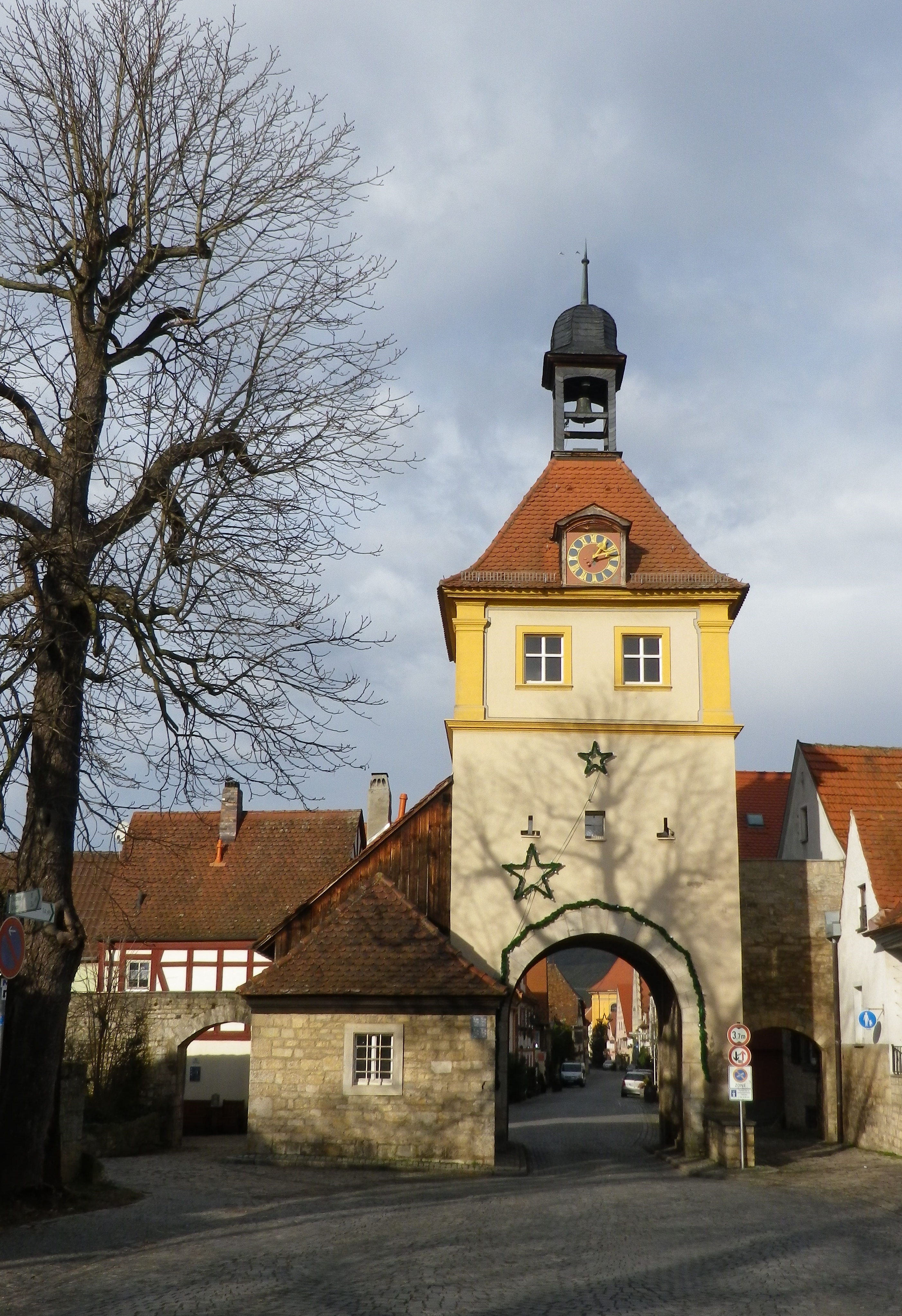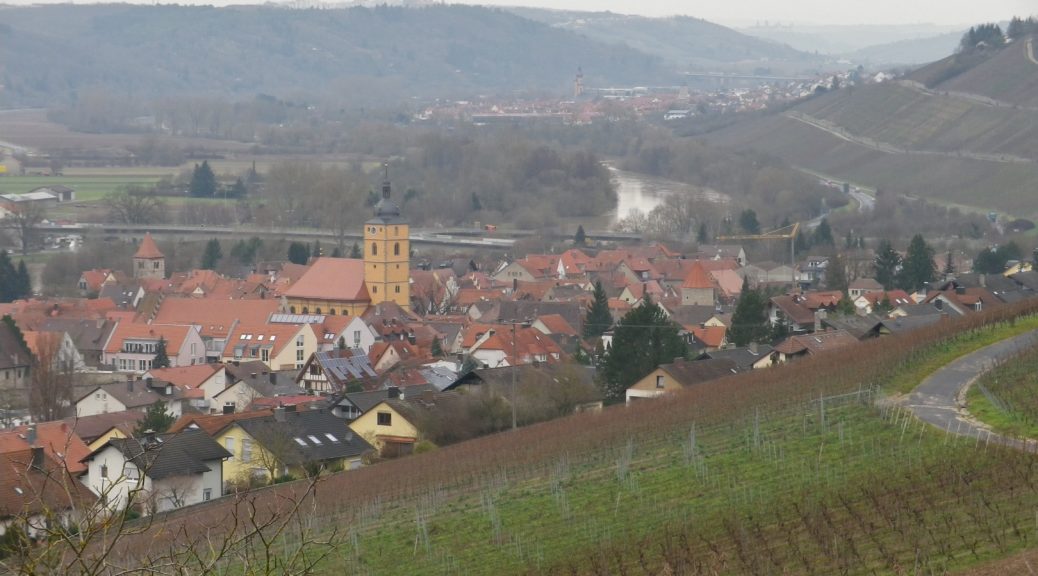The “Sommer” in Sommerhausen means summer in German, but there were no signs of it the day I was there. Dark, windy and spitting rain, as is normal in the winter here, it was a good day to follow the Weinsbergweg, the town’s trail devoted to its wines, along the slopes lining the Main River, about 8 miles south of Wuerzburg.
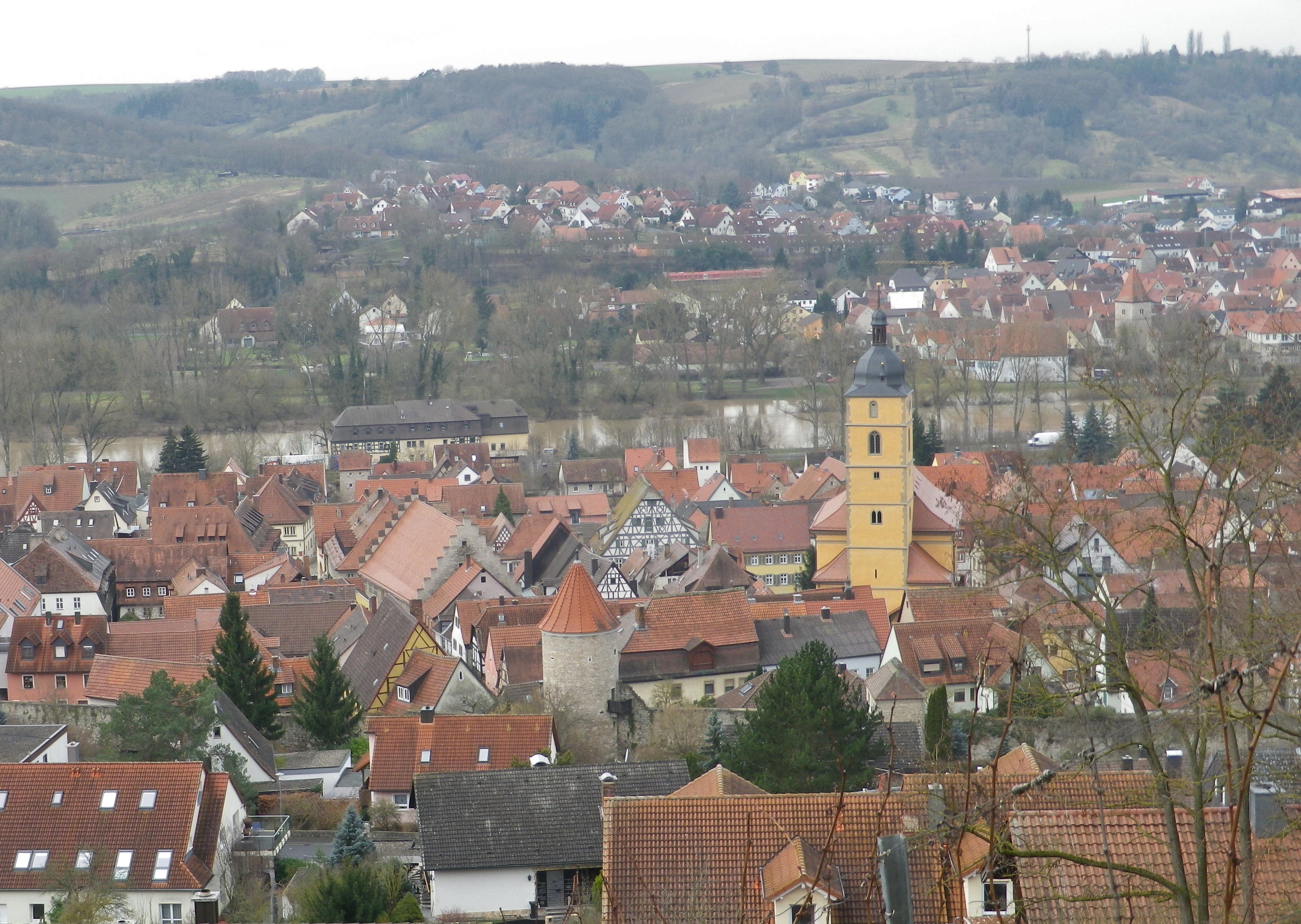
Actually, winter proved to be an excellent time to hike this trail. In winter, I had the place to myself. It’s easy to imagine the summer crowds though, charmed by this little town’s atmosphere. The historical center huddles behind its medieval walls, stoutly defended by two imposing gates, and several towers. These shelter old half-timbered houses, meticulously maintained, facing onto narrow alleyways, a church, and an imposing Rathaus (town hall). It even holds a palace within its walls, now the site of a well-known winery, the Weingut Schloss Sommerhausen.
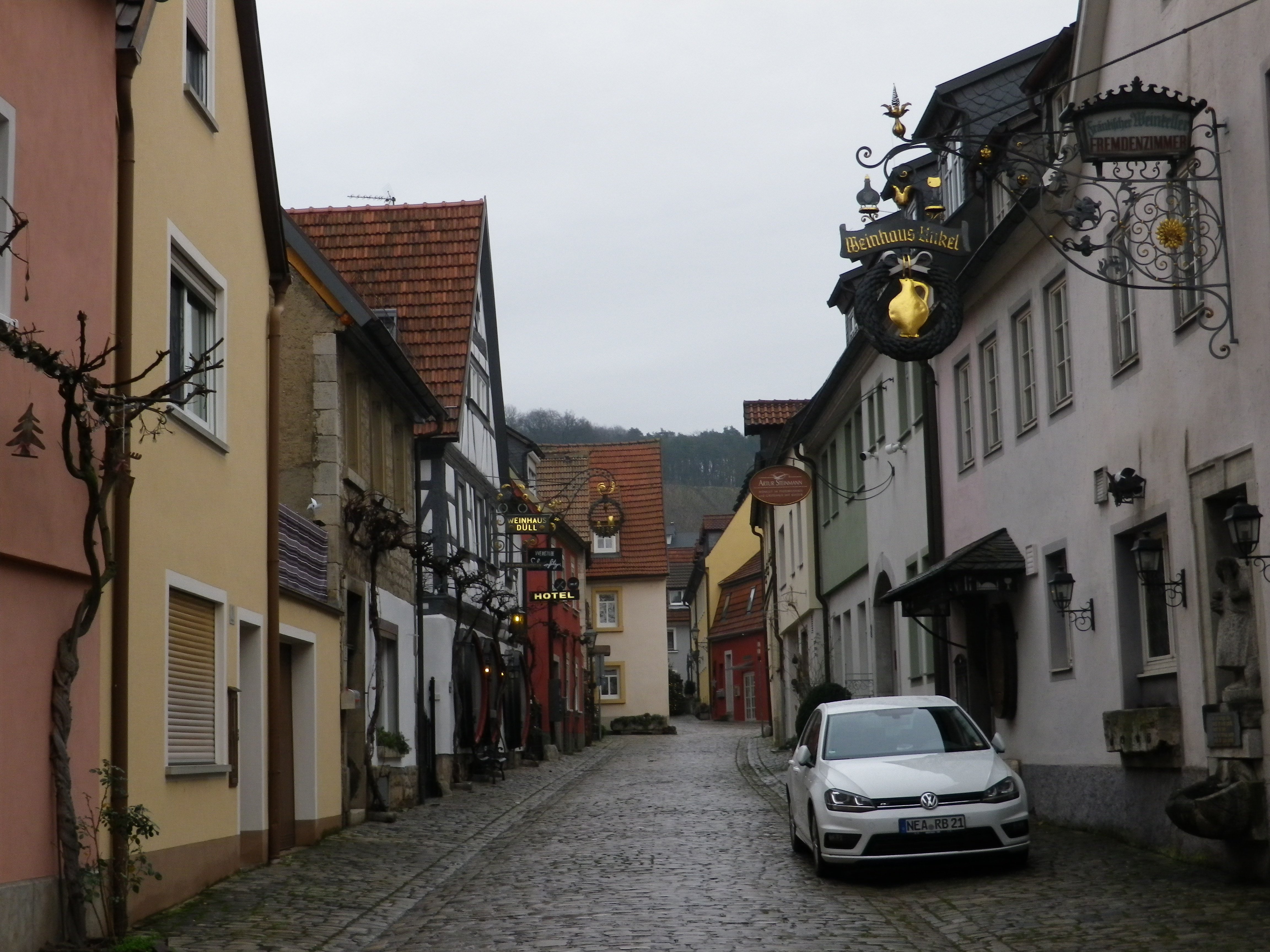
Wine is one of the glories of Sommerhausen. A couple of its vineyards are well-known. Fortunately, the wine trail leads through one of them, and leads past several educational boards devoted to the viticultural and vinicultural practices in this area. Of special interest is a row of vines, a sampling of varietals grown in this area of Franconia, to include a unique Blauer Silvaner. Intriguingly, this is a (white) Silvaner variety, with red berries, giving the wine a pinkish hue.
Additionally, high above the town, was a collection of artworks, fantastic sculptures of various materials, commemorating the work of the winemakers. Set in a rest area, replete with benches and a picnic table, it provides a place to rest and admire the twin beauties of art and nature. Incidentally, in sunnier weather, this would be one of perhaps only two shady places along the trail.
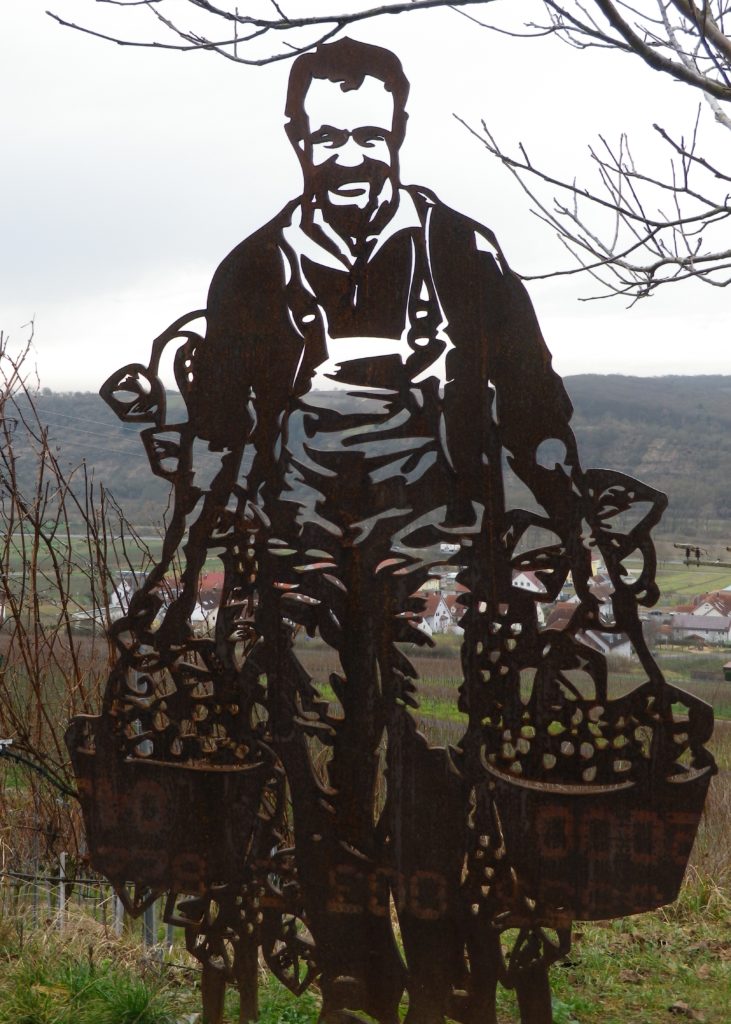
Shortly after the sculpture exposition, it is possible to either stay on the educational trail (formally known as the Wein-Kultur-Weg), returning to town; or follow the Weinbergsweg, an extended trail. The extension continues high along the slopes following through the vineyards south of the town. Once opposite Gossmannsdorf on the other bank of the Main, it heads back north to Sommerhausen. Along the way, it passed the old quarries. The limestone in this area provides a nice minerality to the wines. But the limestone from here has also been used, even far away, as construction material for centuries.
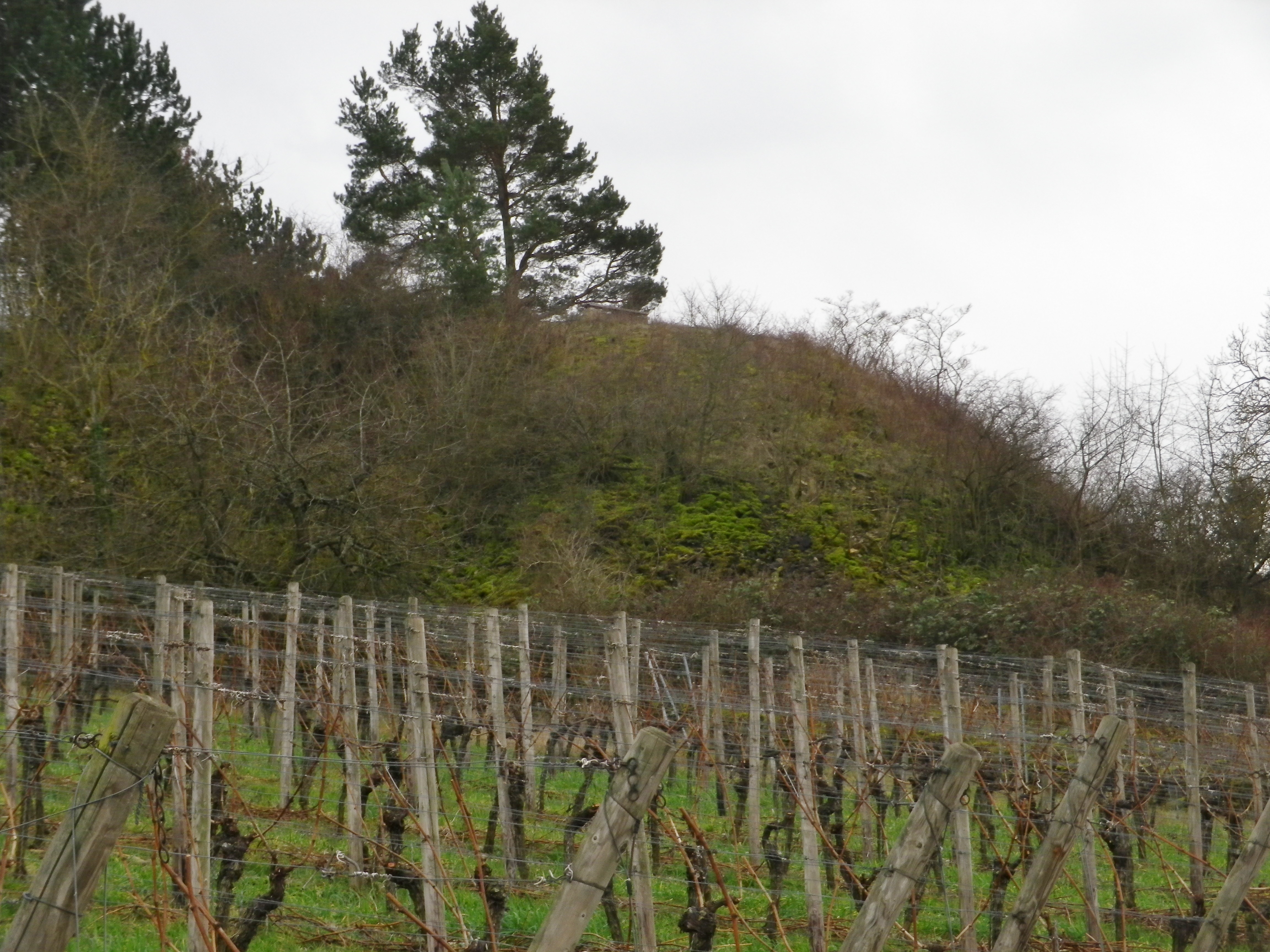
Wandering through the historical center provided opportunity to see how the quarried limestone blocks were put to use. The walls, gates and defensive towers were made from solid limestone blocks. Many of the houses though, had limestone foundations, with second and third story half-timbered construction. The trail meanders through town, offering opportunities to explore some of the old structures and winding alleys. Around every corner is a new delight, not to mention opportunities to buy wine. Such is the legacy of a town known for its wine and its charm.
